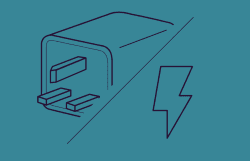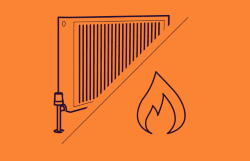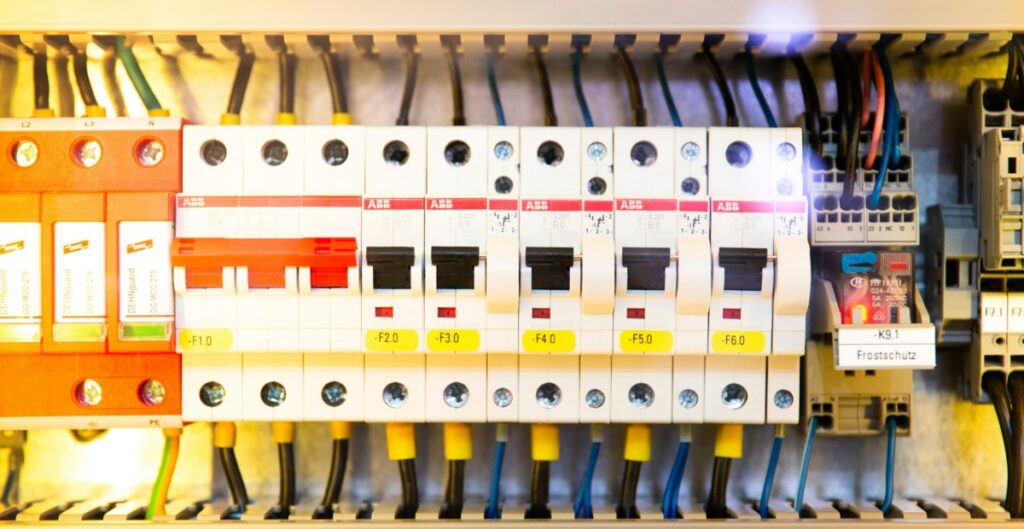Introduction to Switchgear and Circuit Breakers
If you have not heard about switchgear yet, then you need to start your research. Switchgear is an essential addition to your business to protect your expensive electrical equipment from damage. Circuit breakers are a form of switchgear. They are automatically operated and they behave they like the switches we use to turn lights on and off. However, instead of turning on/off when they are pushed, circuit breakers trigger when an excess of electrical current is detected. An excess of electrical current may occur as a result of faulty equipment within the circuit, a power cut or surge, or a short circuit. Circuit breakers detect this excess current and interrupt the current flow. This interruption protects electrical equipment further along the circuit from being affected by the overflow current. Passing excessive current through electrical equipment can severely damage it. This is the reason why we are advised to turn off larger electrical items connected to the mains during a power cut, to prevent damage from the power surge when the power comes back on. Circuit breakers do this automatically, and as part of the circuit, this is how they protect your equipment. Many businesses rely on computers and other electrical equipment heavily, and often a lot of it can be very expensive to replace. Circuit breakers help prevent replacements being necessary. This investment would save you a lot in the long term. Unlike a fuse, which conducts a similar function, circuit breakers can be reset. The reset can happen automatically or manually. Therefore, circuit breakers do not need to be replaced whereas fuses do. This means investing in a circuit breaker is the most cost-effective way to protect your electrical equipment because you do not have to replace the switchgear, nor the electrical equipment, in the event of an electrical current surge. Obviously, there are lots of variations of circuit breakers and, in this article, we are going to take a look at some of the main ones.
Types of Circuit Breakers (Low Voltage, Medium Voltage)
A switch pole refers to the number of separate circuits that the circuit breaker controls.
| Type | Abbreviation | Definition |
| Single Pole | SP | A circuit breaker which controls just one circuit |
| Single Pole and Neutral | SPN | A circuit breaker which controls just one circuit, controlling only the hot side of the circuit. |
| Double Pole | DP | A circuit breaker which controls two circuit |
| Triple Pole | TP | A circuit breaker which controls three circuits |
| Triple Pole and Neutral | TPN | A circuit breaker which controls three circuits, controlling on the hot side of each of the three circuits. |
| Four Pole | 4P | A circuit breaker which controls four circuits |
What do Circuit Breakers Look Like?
Circuit breakers are made in a variety of sizes. Small devices protect low-current circuits or sometimes individual household appliances. These miniature Circuit Breakers use air alone to interrupt electrical currents. Larger devices are designed to protect high-voltage circuits which can supply whole cities. Circuit breakers can terminate currents very quickly – between 30 and 150 milliseconds. This means circuit breakers act very quickly to protect your electrical equipment as wholly as possible. The generic, ultimate function of a circuit breaker, or a fuse, too, is to act as an automatic method of removing power (or electrical current) from a faulty system. This is referred to as Over Current Protection Device, often abbreviated to OCPD. Circuit breakers are rated by two things:
- the normal current they are expected to be capable of carrying,
- the maximum short circuit current that they can safely interrupt.
The latter figure will be conveyed to you via the circuit breaker’s AIC (Ampere Interrupting Capacity). Identifying the right circuit breaker for your specific needs may be overwhelming and confusing; that is where Energy Solutions can offer you assistance. We can advise you on your individual switchgear needs and requirements.
How do Circuit Breakers work?
Circuit breakers work alongside appliances, ground wires, and live wires to manage the electrical current in a building. The circuit breakers’ job is to cut off the circuit whenever it jumps above a safe level. Here’s how circuit breakers work:
- Sensing the Current: Circuit breakers have a built-in sensor that continuously monitors the current flowing through the circuit. This sensor can detect both normal operating currents and abnormal overcurrent conditions.
- Trip Threshold: Circuit breakers are set with a trip threshold, which is the maximum current level they can allow to flow through the circuit without tripping. This threshold is usually adjustable and can be set according to the specific needs of the circuit.
- Normal Operation: During normal operation, the current flowing through the circuit remains below the trip threshold. In this state, the circuit breaker remains closed, allowing electricity to flow through it without any interruption.
- Overcurrent Condition: If an overcurrent condition occurs, such as a short circuit or an overload, the current in the circuit exceeds the trip threshold of the circuit breaker. When this happens, the sensor detects the excessive current and sends a signal to the circuit breaker’s internal mechanism.
- Tripping Mechanism: The internal mechanism of the circuit breaker is designed to respond to the signal from the sensor. It includes a tripping mechanism that is activated when the overcurrent condition is detected. The tripping mechanism can vary depending on the type of circuit breaker, but common methods include thermal, magnetic, or a combination of both.
- Thermal Tripping: In a thermal circuit breaker, the excessive current causes a bimetallic strip to heat up. When the strip reaches a critical temperature, it bends and triggers the tripping mechanism, opening the circuit.
- Magnetic Tripping: In a magnetic circuit breaker, the excessive current creates a magnetic field that forces an electromagnetic coil to move, which, in turn, triggers the tripping mechanism.
- Circuit Interruption: When the tripping mechanism is activated, the circuit breaker rapidly opens its contacts. This interruption of the electrical circuit prevents the overcurrent from continuing to flow, protecting the circuit and connected devices from damage.
- Resetting: After a circuit breaker has tripped and interrupted the circuit, it must be manually reset to restore power to the circuit. This can be done by physically moving the circuit breaker’s handle or button from the tripped position to the closed position.
Circuit breakers are an essential component of electrical systems, as they provide both electrical safety and the ability to quickly disconnect power in case of a fault. They are widely used in residential, commercial, and industrial settings to prevent electrical fires, equipment damage, and electrical hazards.
The Key Differences Between Fuses and Circuit Breakers
Both circuit breakers and fuses act as switchgear which interrupts currents, but they do so in very different ways. Below is an overview of the differences:
| Fuses | Circuit Breakers |
| Replaceable | Resettable |
| Made of a piece of metal which melts when overheated by current, cutting off power to the circuit. | Contain an internal switch which is tripped by an electrical surge, cutting off power to the circuit |
| Tend to interrupt the current quicker | Tend to interrupt the current slower |
| Less expensive | More expensive |
| Prevents overheating | Prevents overheating and electric shock |
Let us now take a closer look at the differences:
Fuses
Fuses stop electrical current because they typically contain filament, a thin piece of metal which connects the fuse to the electric circuit. This filament when it gets too hot. The melting of the filament breaks the circuit, and the electrical current can no longer pass through. An electrical current which is too high will be too powerful, creating a lot of heat energy which therefore melts the filament. Different types of fuses are designed to function with different levels of electrical current. When the level of current they are designed to function with is exceeded, that is when the filament will melt. Therefore, it is important that you are buying the correct type of fuses for your specific needs. There are different voltage and ratings available. Typically, it is advised that the best fuse option would be one which is rated slightly higher than the normal operating current within the circuit, just in case.
Circuit Breakers
Circuit breakers have two methods of working – the first is through the use of an electromagnet, and the second is through the use of a bi-metal strip. In either instance, the breaker allows electrical current to flow across the metal conductor, connecting the circuit. However, when a current reaches an unsafe level for the electrical equipment within the circuit, the magnetic force of the magnet or the metal strip becomes strong enough to trip a metal lever. This metal lever throws the switch mechanism, breaking the current. An additional option for a circuit breaker is for the metal strip to bend. This action of bending also throws the switch and breaks the connection. This protects the electrical equipment in the circuit by preventing the electrical current from affecting the equipment. Because they contain a switch to turn off current access, the flow of electricity can be restored by just turning on/resetting the circuit breaker’s switch. In many domestic cases, circuit breakers are found in one space, often a cabinet containing many individual switches (this is known as a breaker box). This allows for individual circuits to be switched off in different areas of a house, to allow for work or adjustment to wiring etc in that specific part. This is useful as it maximises the amount of the property which remains functional even during a maintenance period. They also include a ground fault circuit interrupter application. This function prevents electric shock, rather than only overheating/equipment damage. This feature is generally most useful for kitchen or bathrooms as electrical appliances tend to be nearer to water here, making the likelihood of electrocution higher should there be a power surge. Circuit breakers and fuses are not always interchangeable.
For expert advice on which switchgear would work for your specific needs and circumstances, Energy Solutions are the best people to contact for impartial, expert advice on your energy queries.
For more information about this post and how Energy Solutions can help with your Electricity, Gas, or Water, click on the links, or check out the contact details at the bottom of the page.




